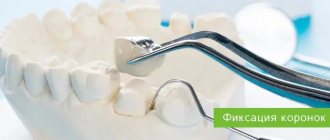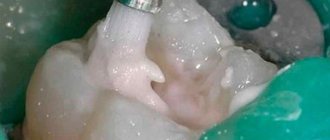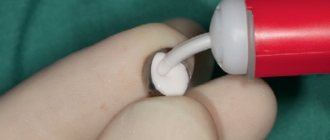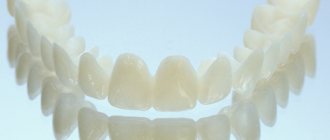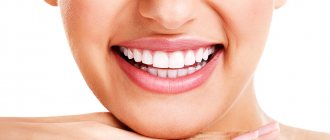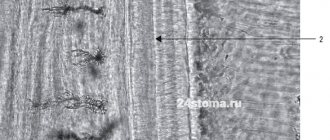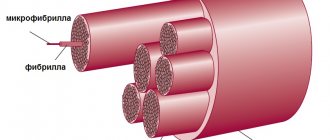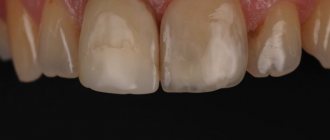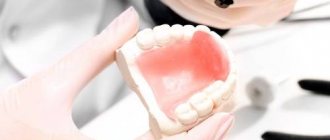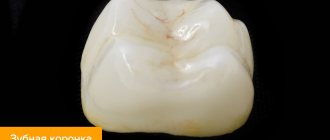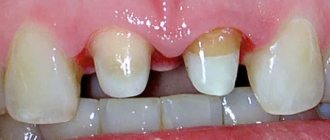Temporary cement: how does it work and when is the best time to use it?
In prosthetics, temporary cement is usually used when installing temporary and permanent crowns, as well as in cases where it is necessary to test the shade and functionality of the prosthetic structure.
Another issue is meeting deadlines: the dentist usually tells you how long to come for an appointment to remove the temporary crown and replace it with a permanent one. This means that the quality of the cement is designed to last for a certain period (temporary structures are designed to last several months). Accordingly, temporary cement has its drawbacks: displacement, loosening or complete decementation of the crown, inflammation of the gums, difficulties in cleaning the interdental spaces with dental floss.
Dental cement
Today in dentistry, “cement” is used not only for fillings, but also for prosthetics. This is a homogeneous and flexible mass that is obtained from powder and liquid. The latter hardens as a result of a chemical reaction.
Most often, dental cement is used for:
- Filling crowns;
- Filling dental crowns;
- Creation and fixation of fillings on the crown;
- When using fixed prosthetics.
Cement is used in most cases in pediatric dentistry. This is explained by the specific structure of baby teeth. Another direction where the mixture is used is the installation of fillings in adults. But since it begins to crumble fairly quickly, it is not used for permanent filling.
On this page you can find out detailed information about the methods and features of dental fillings in our clinic.
And here you can learn in detail about the indications for use and methods of installing a dental pin.
Such a material must have the following properties:
- biocompatibility , that is, it should not be rejected by living tissues;
- correct curing time , if the material hardens too early, it may not harden correctly and the procedure will have to be redone, the same can happen if hardening takes too long;
- hypoallergenic , the material should not cause an allergic reaction;
- strength , it will allow the material not to fall apart under chewing load on the tooth;
- aesthetics , especially important when using cement on the front teeth;
- homogeneous structure allows it to be evenly distributed throughout the dental canals;
- resistance to staining , such material should not be stained when eaten.
The fixation of metal-ceramic crowns can be divided into two groups: permanent and temporary. Ceramics are fixed with cement when the crown is installed for a short period of time and after a while it will need to be removed for subsequent treatment. As for long-term fastening, adhesives are used in this case.
Dental cement is distinguished by its flexibility at the setting stage and durability after hardening. There is a large range of mixtures of different shades for orthopedics and pediatric dentistry.
Based on the composition of the mixture, they are divided into
- phosphate (zinc and phosphoric acid);
- silicate (aluminum, phosphoric acid);
- glass ionomer (glass, polyacrylic acid).
Permanent or temporary cement?
In root canal treatment, temporary cement also has its place - even when a permanent crown is ready, the therapist may need access to the root canals, which means it is better to install a permanent crown with temporary cement. Otherwise, if root canal access is needed and the permanent crown has been placed with permanent cement, the therapist will need to make a hole in the crown to access the canals. In this case, there is a risk of cracks forming, which could cause crown breakage in the future.
A logical question arises: “Why not fix all crowns with temporary cement?” The answer is simple: an experienced dentist, after carrying out the necessary treatment, can confidently place a permanent crown on permanent cement, because he knows that the root canals have been treated efficiently and will not require opening the crown. If tooth extraction was recommended, but the patient insisted on canal treatment and there is no guarantee for such treatment, then a crown with temporary cement is installed.
Moreover, permanent cement ensures that the crown is tightly fixed to the tooth so that saliva and bacteria do not get under the crown.
Another point is the peace of mind and confidence of the patient: with permanent cement, he will not need to come to the dental clinic every few months, except for a general preventive examination.
Materials for filling and restoring teeth
Types of composites
Classified:
- according to the characteristics of hardening (chemical, light, double);
- physical condition (diluted powder, paste, liquid);
- concentration and size of particles filling the composition;
- degree of transparency;
- purpose of use (universal, for lateral (chewing), anterior (frontal) teeth).
Macrofilled, microfilled, mixed (hybrid), and nanocomposites are known.
Particles of macrofilled composites have a size of 1-100 microns, the filler occupies up to 87% of the weight of the material. The advantages are high strength, but they are characterized by roughness, low level of aesthetics, changeable color, and the possibility of secondary caries formation. They are used in adding tooth stumps for crowns and working with loaded cavities of classes I and II.
The size of the elements of microfilled composites is 0.007 - 0.4 microns. The weight of the filler is up to 79% of the total mass of the material with high aesthetics. Main disadvantages: fragility. It is used for the reconstruction of anterior teeth that do not experience significant load, and cosmetic operations for contouring the treated teeth.
The particles of hybrid type composites have a size of 0.04 - 4 microns, the filler occupies up to 87% of the weight of the material. Macrohybrids consist of elements measuring 0.04 - 3 microns. Solutions of this group are characterized by stable color, high strength, easy polishability, and aesthetic qualities. Designed for working with front teeth (group A), filling lateral teeth (group B). Microhybrids are suitable for creating fillings on all types of teeth and working with any cavities, that is, they are completely universal.
Nanocomposites differ in particle size from 20 to 75 nm. The weight of the filler is 78.5% of the total mass. The particles are produced through industrial synthesis rather than grinding. The advantages are durability, color stability, and external beauty. Used to make fillings on all teeth and in any cavities.
A material that combines the technology of producing glass ionomers and composites is a compomer. Consists of acrylic resin, strontium fluoride, strontium-fluorine-silicon glass, polyacrylic acid, stabilizers and polymerization initiators. It is characterized by excellent biocompatibility, good adhesion, but low strength and poor aesthetics. Due to their physical properties, they are mainly used when working with milk and non-stressed teeth, as well as as insulating spacers.
Text of the book “Therapeutic Dentistry. Lecture notes"
Materials used for placing therapeutic and insulating pads
Materials for therapeutic pads are indicated for the treatment of deep caries, acute focal pulpitis using the biological method, and in case of accidental opening of the pulp chamber during the treatment of deep caries. Materials for isolating gaskets are widely used in the treatment of moderate, deep, complicated caries to isolate the filling material located in the root canals of the teeth from the permanent filling material, to improve the conditions of fixation and adhesion of the permanent filling material to the walls of the carious cavity.
Materials for therapeutic pads
All materials for medical pads can be divided into various groups according to one or another characteristic. Firstly, according to the type of curing, they are usually divided into light- and chemical-curing materials. Based on the number of components, materials for medical pads are divided into two-component (chemical curing) and single-component (chemical and light curing). Two-component materials consist of two components that are mixed during use; one-component materials are ready for use and do not require mixing.
Therapeutic lining materials are used in the treatment of deep caries. In this case, they are applied pointwise to the dentin located above the pulp horns. When treating pulpitis using the biological method, more material is applied.
There are medicinal pads, the main active ingredients of which are calcium hydroxide, zinc compounds and eugenol, combined medicinal pads.
Materials, the main component of which is calcium hydroxide, can be in the form of an aqueous suspension, chemical- and light-curing materials, and varnishes. All of them have a pronounced alkaline environment, which determines their anti-inflammatory, analgesic, and stimulating effects.
An aqueous suspension is a non-hardening material consisting of a powder based on calcium hydroxide mixed with water. It may contain substances with radiopaque properties. It must be remembered that there should be no contact of the suspension with air, because in this case the material loses its medicinal properties. Another negative point is that it dissolves over time. This leads to the need to re-place it at certain intervals on the bottom of the cavity in the area of the horns of the pulp chamber until a significant degree of replacement dentin is formed. The use of an aqueous suspension of calcium hydroxide preparations leads to the need in this case to abandon the use of mineral cements containing mineral acids as a filling material. Acids react with calcium hydroxide, resulting in a loss of the medicinal properties of the material due to their interaction in the neutralization reaction. Representatives of materials based on an aqueous suspension of calcium hydroxide are Calasept, Calcium, Calcicur, Calcipulpe.
The use of varnish based on calcium hydroxide is somewhat less effective. Some difficulties arise during operation. Representatives of this group are “Contrasil”.
The effectiveness of light-curing calcium-containing materials is also low. This group includes materials such as “Calcesil LC”, “Esterfil LC”, “Calcimol LC”.
Therapeutic pads based on calcium compounds, in the form of chemically cured cements, are positioned as the most successful. The positive properties of these materials are more pronounced than others; they are easier to use, they dissolve less, and do not require the same frequency of replacement as preparations in the form of an aqueous suspension. At the same time, it should be remembered that when applying the material of a medical pad in a significant amount, the likelihood of destruction, cracking during chewing, and reducing the service life of a permanent filling significantly increases. Representatives of this group of materials are Calcesil, Dycal, Life, Calcimol, Septocalcine Ultra.
Therapeutic cushioning materials based on zinc and eugenol compounds are cements that harden over a fairly long period of time - up to half a day. The use of these spacer materials when planning the subsequent installation of a permanent filling made of a composite material is undesirable, since the adhesion of the permanent filling material to the hard tissues of the tooth and spacer materials is disrupted and the characteristics of the composite structure are disrupted. This is determined by the presence of eugenol in these materials. Representatives of this group of materials are Kalsogen Plus, Cavitec, Zinoment.
Also, therapeutic cushioning materials can be combined and contain completely different components. These components are selected directly by the doctor depending on certain features of a given clinical situation and the need to achieve a particular result. The composition of combined therapeutic pads may include substances that promote the formation of secondary dentin. These include substances such as calcium glycerophosphate, calcium hydroxide, dentin powder, bone tissue powder, etc. Anti-inflammatory drugs can also be included in the pads. They can be represented by medicinal substances of a hormonal nature (glucocorticoids - hydrocortisone, prednisolone, etc.) or belong to non-steroidal anti-inflammatory drugs (indomethacin, salicylic acid-based drugs, etc.).
Medicinal substances that affect microorganisms can also be represented by antiseptic agents (sodium hypochloride, chlorhexidine, dimexide, etc.), chemotherapeutic agents (metronidazole, antibacterial drugs).
It is possible to include proteolytic enzyme preparations in the composition of the gaskets, representatives of which are stomatozyme, imozymase, etc.
In addition, painkillers (for example, novocaine), various oil preparations (peach, clove oil, etc.), oil solutions of vitamins, etc. can be included in the composition of combined therapeutic pads.
Insulating gaskets
An insulating lining material is applied to the hard tissues of the cavity up to the level of the enamel-dentin border. There are basic and thin-layer (liner) gaskets. The base gasket is more than 1 mm thick. It prevents the impact of temperature and chemical irritants on the dental pulp, ensures the formation of the required shape of the carious cavity, and the achievement of optimal conditions to ensure adhesion of the filling material to the walls of the carious cavity. This ensures an increase in the service life of the installed filling, reduces the likelihood of its falling out, the risk of developing secondary caries, etc. The liner gasket does not prevent the exposure of the dental pulp to thermal irritants. Chemical irritants in the presence of a thin-layer gasket cannot affect the pulp. The liner also ensures the creation of optimal conditions for the adhesion of the filling material to the walls of the carious cavity.
Zinc phosphate, polycarboxylate, glass ionomer cements, as well as insulating varnishes are used as materials for insulating gaskets.
Zinc phosphate cement
Available in powder and liquid form. The powder mainly consists of zinc oxide and magnesium oxide; the cement liquid is based on orthophosphoric acid, aluminum and zinc compounds. When mixing cement components, it is necessary to add the powder to the liquid in small parts, the ratio of the components must be certain (2.5 parts of powder should be taken for 1 part of liquid or 1 g for 4-6 drops). It is advisable to mix the material on a smooth glass surface with a metal spatula. Zinc phosphate cement has fairly good handling properties, quickly acquires a certain hardness, and has good strength characteristics. When cement powder and liquid are mixed, an exothermic reaction occurs, which leads to an adverse effect on the pulp of temperature irritants. It is also possible for the pulp to be affected by the acid contained in the cement, which is also extremely undesirable. This creates the need to refuse to place a spacer made of zinc phosphate cement in case of deep caries, because it is absolutely certain to avoid the action of thermal and chemical irritants on the pulp chamber, which can lead to the development of inflammation in the dental pulp. Modified zinc phosphate cements may contain silver and copper compounds or fluorine compounds. These varieties are marketed as having bactericidal properties. At the same time, these cements have a much greater impact on the pulp during the mixing process due to their high acidity. In addition, they dissolve noticeably more in the oral cavity, and their strength characteristics are lower compared to conventional zinc phosphate cements. There is also a group of hydrophosphate cements, for mixing which distilled water is used, and orthophosphoric acid is included in the powder. Representatives of zinc-phosphate cements are “Phosphate-cement”, “Uniface”, Adgesor, Argil, “Foscin bactericidal”, “Visphat-cement”, etc.
Polycarboxylate cements
consist of powder and liquid. The powder is predominantly composed of zinc oxide and magnesium oxide, the liquid is a copolymer of acrylic acid combined with an organic acid.
The positive properties of polycarboxylate cements are their fairly high strength characteristics, their significantly less negative impact on the dental pulp, good adhesion of cement to hard dental tissues, as well as sandblasted metals. An unfavorable property of cement is its sensitivity to oral fluid, under the influence of which it dissolves. In addition, cement reacts with air, as a result of which its properties undergo changes. To prevent this interaction, it is necessary to store the material in a hermetically sealed container. This also explains the requirement to mix the components of cement only before using it. It is advisable to mix the components of polycarboxylate cement - powder and liquid - on the smooth side of the glass. You need to take 2 parts of powder and 1 part of liquid and first mix half of the cement powder with the liquid, and then add the rest. After mixing, the material has viscosity, thickness, and a shiny surface. The criteria that cement has become unsuitable for use are the loss of its original shine and the appearance of so-called stretchy threads. There is a group of polycarboxylate cements, for mixing which distilled water is used as a liquid. Representatives of polycarboxylate cements are materials such as Durelon, Carboxylate Cement, Carboco, Aqualox.
Glass ionomer cements
consist of powder and liquid. The powder is represented by calcium and aluminum fluorosilicates containing fluorine compounds. Cement liquid is a 50% solution of polycarboxylic acid combined with 5% tartaric acid. Polycarboxylic acid can be represented by polyacrylic, polymaleic, polyitaconic acid, etc. There are also so-called aquacements, in which distilled water is used as a liquid, and polycarboxylic acid is contained in the powder.
There are a large number of different classifications of glass ionomer cements. The first classification is based on the characteristics of the use of glass ionomer cements. The first type of glass ionomer cement, according to this classification, is used for fixation of various orthopedic structures. The second type includes materials for permanent fillings. The third type is fast-curing glass ionomer cements, which can be used to install insulating gaskets or as fissure sealants. The fourth type of glass ionomer cement is supposed to be used for filling root canals.
According to the curing mechanism, glass ionomer cements are usually divided into chemically curing materials, which include classical cements and cements that are mixed using distilled water as a liquid. The second group of materials according to the type of curing are those that are considered light-curing. In addition, there are materials with a combined curing method, which include dual- and triple-curing hybrid glass ionomer cements.
Hardening of chemically cured glass ionomer cements occurs due to a chemical reaction, as a result of which bonds are formed between the carboxylate groups of organic acids that make up the liquid and the calcium and aluminum ions of the powder. In addition, chemical bonds are formed between carboxylate groups and calcium ions of hard dental tissues. The surface of hardened cement is covered with a certain thickness of a layer of non-reacting components. This layer is called silica gel.
Hardening of glass ionomer cements occurs due to a reaction that is initiated by a special lamp. As a result of this reaction, a certain cement structure is also formed.
Hardening of dual-curing hybrid glass ionomer cements occurs through two types of reactions: a chemical reaction and a light-curing reaction of the cement base.
Hybrid glass ionomer cements with a triple curing mechanism, in addition to the two above, are also characterized by a chemical curing reaction of the cement base. This reaction is associated with the presence of a special catalyst in the powder, which ensures the formation of a cement base in deep areas of the material. The effect of the activating lamp on these areas is difficult when applying the material in full portion.
Glass ionomer cements have positive properties, which include, firstly, the ability to chemically adhere to hard dental tissues. To ensure this adhesion, it is not necessary to have an etched layer and completely dry them. This is determined by the fact that bonds are formed between the material and the hard tissues of the teeth, and by the fact that the hardening process of glass ionomer cement is accompanied by a slight increase in its volume. In addition to fairly good adhesion of cements to the hard tissues of teeth, they also form chemical bonds with filling materials. This is also a fairly important factor. Secondly, glass ionomer cements do not have a damaging effect on the dental pulp. This is explained by the fact that organic acid molecules are much larger than the size of the dentinal tubules. There is no chemical irritation of the pulp. This determines the widespread use of glass ionomer cements as insulating gaskets. Thirdly, glass ionomer cements contain fluorine compounds. This determines the fact that the tooth tissue adjacent to the filling acquires a stronger structure and becomes more resistant to the development of the carious process. In addition, there is evidence that these materials can absorb fluoride ions from the environment, from the oral cavity and promote its incorporation into the structure of hard tissues. Fourthly, it is necessary to note the significant strength characteristics of glass ionomer cements and their minimal degree of dissolution under the influence of oral fluid. Fifthly, they have quite good aesthetic properties. This is especially important in situations where the use of composite materials is questionable and a permanent glass ionomer cement filling is desirable. Undoubtedly, the aesthetic properties of cements are worse than those of composites, but nevertheless, in certain clinical situations they are the materials of choice. Also quite important is the fact that glass ionomer cements are quite easy to use and are more affordable in terms of cost compared to composite materials.
The negative properties of glass ionomer cements are the following. Firstly, it should be noted that the hardening process of glass ionomer cement fillings takes about a day. At this time, the impact of various factors on the filling may, with a high percentage of probability, not pass without a trace. The hardening process of a glass ionomer cement filling can be greatly influenced by factors such as exposure to liquid, excessive dryness of the filling, and various types of mechanical and chemical irritations. Regarding the harmful effect of liquid on the hardening of glass ionomer cement, it is believed that it helps to remove aluminum ions from the material, which leads to improper creation of the structure of the material. Excessive dryness of the filling presumably leads to disruption of the reaction between organic acid and silicates. To prevent these violations, it is recommended to cover a permanent filling made of glass ionomer cement after its application with a special varnish that will provide protection from the above effects. The adverse effects of mechanical factors can be reduced by postponing the final processing of the filling to the next visit, which can be scheduled the next day. On the day of applying a filling made of glass ionomer cement, it is permissible to carry out only preliminary treatment of the filling with a sharply sharpened scalpel. The adverse effects of chemical irritants primarily concern the etching of the mass during a period of time when the glass ionomer cement mass has not completely hardened. Under the influence of chemicals, the ongoing chemical reaction may be distorted and the material may lose its inherent properties. Despite the fact that glass ionomer cements are considered non-irritating to the pulp, their use in deep carious cavities without a therapeutic lining is not indicated. As mentioned above, the strength characteristics and aesthetic properties of glass ionomer cements are inferior to composite materials. Representatives of glass ionomer cements are Ionobond, BaseLine, Vitrebond, Vitremer, Cavalite.
Insulating varnishes
Insulating varnishes protect the pulp from the action of both chemical and temperature irritants. The composition of insulating varnishes includes the following components: polymer resin, filler, solvent. It is possible to include a medicinal product in the insulating varnish. The solvent of the insulating varnish is a volatile substance, and this is what causes the varnish to harden. When the solvent evaporates, cracks may form, so it is recommended to apply the insulating varnish at least twice. Indications for the use of insulating varnish are the subsequent use of zinc phosphate cements, amalgam, and reduction of dental hypersensitivity. Representatives of insulating varnishes are Dentin-protector, Contrasil.
Lecture No. 8 Permanent filling materials used for filling carious cavities
Permanent filling materials are usually divided into hardening and primary hardening. Hardening materials, in turn, are divided into cements, polymer filling materials, compomers, and metal filling materials. Primary hard materials are usually divided into materials for the manufacture of inlays, veneers, and retaining devices.
Dental cements
All existing dental cements are divided into mineral and polymer. This division is based on the type of acid contained in the cement: mineral or organic. All cements consist of powder and liquid, which are mixed by the doctor using a dental spatula until a homogeneous cement mass is formed.
Mineral cements
The composition of mineral cement powder includes compounds of zinc, magnesium, aluminum, calcium, mainly in the form of oxides. The liquid of mineral cements is a mixture of mineral acids with the addition of zinc, aluminum, and magnesium compounds. Mineral cements can be divided into several groups. These include zinc phosphate, silicophosphate and silicate cements.
Zinc phosphate cements
Available in the form of a combination of powder and liquid. The powder mainly consists of zinc oxide and magnesium oxide; the cement liquid is based on orthophosphoric acid, aluminum and zinc compounds. When mixing cement components, it is necessary to add the powder to the liquid in small parts, the ratio of the components must be certain (for 1 part of liquid - 2.5 parts of powder or for 4-6 drops - 1 g). It is advisable to mix the material on a smooth glass surface with a metal spatula.
Negative properties: insufficient strength characteristics, susceptibility to dissolution in oral fluid. It is acceptable to use zinc phosphate cement as a permanent filling material in baby teeth before replacing them and in those teeth that are intended to be used for further orthopedic treatment using permanent structures in the form of artificial crowns or bridges.
Representatives of zinc-phosphate cements are “Phosphate-cement”, “Uniface”, Adgesor, Argil, “Foscin bactericidal”, “Visphat-cement”, etc.
Silicate cements
belong to the group of mineral cements. They are available in the form of a powder and liquid system. The powder is a mixture of silicon, calcium, and aluminum compounds, mainly in the form of their oxides. Silicate cement liquid is a mixture of inorganic mineral acids - ortho-, para-, metaphosphoric. It is recommended to mix the components of silicate cement on the smooth surface of a glass plate using a dental spatula made of plastic or stainless steel. For 2.5 parts of powder you need to take 1 part of liquid cement. Well-mixed cement has a shiny surface.
The hardening process of silicate cement can be represented as follows. Mixing powder and liquid leads to the development of a chemical reaction. The most important product of the reaction is silicic acid. A certain value of the hydrogen ion potential (pH = 1.6) contributes to the acquisition of a certain structure by the cement mass. It represents unchanged powder particles contained in the bulk composition. Due to the sharply acidic reaction of silicate cement, an insulating lining is mandatory when introducing it into a carious cavity. Otherwise, the dental pulp will be exposed to significant chemical irritation.
The positive characteristics of silicate cement are the sufficient ease of use of the material, low cost, satisfactory aesthetic properties, and the closeness of the thermal expansion coefficients of the material and hard dental tissues. The negative characteristics of silicate cements include the possibility of their adverse chemical effects on the dental pulp, unsatisfactory strength characteristics, insufficient adhesion of the material to the hard tissues of the tooth, a significant reduction in the volume of a silicate cement filling, and the possibility of the filling dissolving as a result of constant exposure to oral fluid.
Silicate cements can be used for filling carious cavities classified according to Black’s classification as 3rd, 5th (regarding the anterior group of teeth that are not exposed to such a significant amount of chewing pressure as the teeth of the chewing group), 2nd (on premolars) classes. Representatives of silicate cements are materials such as “Silicin”, Silicap.
Silicophosphate cements
Available in the form of a system of powder and liquid. The powder of these materials is a combination of zinc phosphate and silicate cements, the ratio between which is 1:4. The liquid of silica phosphate cement is similar to the liquid of zinc phosphate and silicate cements. It is a mixture of three variants of phosphoric acids. Hardened cement is the bulk of cement containing powder particles that have not entered into a chemical reaction. It is recommended to mix the components of silicophosphate cement on the smooth surface of a glass plate using a dental spatula made of plastic or stainless steel. For 2.5 parts of powder you need to take 1 part of cement liquid.
The positive properties of silicate phosphate cement are usually considered in comparison with silicate and zinc phosphate cement. Silicophosphate cement is characterized by better strength characteristics and a greater adhesion force of the material to the hard tissues of teeth. The content of zinc oxide contributes to some neutralization of inorganic acids in the liquid, which helps reduce the irritating chemical effect on the dental pulp. In addition, it is necessary to note the fairly good handling properties and low cost of the material. The negative characteristics of silicophosphate cements include the presence of rather low strength characteristics, low aesthetic characteristics, susceptibility to the dissolving effects of oral fluid, and chemical irritation of the dental pulp. The use of silicophosphate cements is indicated in situations where aesthetic qualities are not fundamental. It is possible to use silicophosphate cements when filling carious cavities, which according to Black’s classification are classified as classes 1, 3, when filling carious cavities of those teeth that are supposed to be used for placing artificial crowns or as a support for a bridge. In addition, the use of silicophosphate cements is indicated for filling primary teeth in children 1–1.5 years before their replacement. Representatives of silicophosphate cements are materials such as Silidont-2, TransLit, Laktodont.
Polymer cements
They are a system of powder and liquid. The liquid of polymer cements is represented by a solution of organic acid. The group of polymer cements includes polycarboxylate and glass ionomer cements.
The components of polycarboxylate cement are mixed on the smooth side of the glass. You need to take 2 parts of powder and 1 part of liquid and first mix half of the cement powder with the liquid, and then add the rest.
The properties of polycarboxylate cements are usually considered in connection with the properties of zinc phosphate cements. The positive properties of polycarboxylate cements are their fairly high strength characteristics, a significantly less negative impact on the dental pulp compared to zinc-phosphate cements, and good adhesion of cement to hard dental tissues, as well as to sandblasted metals. An unfavorable property of cement is its sensitivity to oral fluid, under the influence of which it dissolves. In addition, cement reacts with air, as a result of which its properties undergo changes. To prevent this interaction, it is necessary to store the material in a hermetically sealed container. This also explains the requirement to mix the components of cement only before using it. After mixing, the material has the following characteristics: viscosity, thickness, shiny surface. The criteria that cement has become unsuitable for use are the loss of its original shine and the appearance of so-called stretchy threads. There is a group of polycarboxylate cements, for mixing which distilled water is used as a liquid. Representatives of polycarboxylate cements are materials such as Durelon, Carboxylate Cement, Carboco, Aqualox.
Indications for the use of polycarboxylate cements are their use as insulating spacers, use for filling carious cavities in temporary teeth, when there is little time left before replacing them with permanent ones (no more than 2 years). In addition, the placement of fillings made of polycarboxylate cements is possible with the subsequent use of these teeth as a support for artificial crowns or bridges.
It should also be noted the division of glass ionomer cements
to strengthened ones, which have higher strength characteristics, and aesthetic glass ionomer cements, the aesthetic properties of which are more pronounced. Strengthened glass ionomer cements have higher strength characteristics, are less dependent on the influence of external factors due to the content in their composition of such components as metallic inclusions, various inclusions of fibrous structures, etc. The use of this type of glass ionomer cements is possible when installing insulating gaskets, filling carious cavities and non-carious lesions located in the cervical area of the teeth, when filling carious cavities, according to Black’s classification, belonging to class 1. Root caries is also an indication for the use of materials from the group of glass ionomer cements. Glass ionomer cements are the materials of choice when filling carious cavities in primary teeth. They can be used as temporary filling materials.
The aesthetic group of glass ionomer cements is characterized by an increase in the content of silicon oxide compared to the content of other components of the cement powder. Silicon oxide is responsible for making the future filling transparent, which ensures better aesthetics. At the same time, the content of components that provide certain strength characteristics to the material is naturally reduced. Glass ionomer cements of the group of aesthetic cements can be used for filling carious cavities of the anterior teeth, which, according to Black’s classification, belong to classes 5 and 3. It is possible to use aesthetic glass ionomer cements as an insulating lining.
Characteristics of the main properties of zinc phosphate cement
Characteristics of the main properties of zinc phosphate cement
Zinc phosphate cements acquire their basic properties during their setting reaction and subsequent hardening. These properties further determine the effectiveness of the material. The most important properties of zinc phosphate cements are recorded in the above requirements of the international standard.
Consistency and film thickness . Depending on the purpose, there are two main consistencies of cement: type I - for fixing inlays and type II - for preparing gaskets or fillings. The third consistency of zinc phosphate cement, which is intermediate between the two above, is used for retention of orthodontic appliances and is called consistency for fixation of appliances.
The consistency for fixing inlays is also used for fixing various types of fixed dentures. Although the term “cement” usually implies adhesiveness, phosphate cements do not have this after complete hardening. If unhardened zinc phosphate cement is a rather sticky viscous substance, then the retention properties of hard cement are based only on the mechanical adhesion between the heterogeneous surface of the wall of the carious cavity of the tooth and the filling.
The thickness of the zinc phosphate cement film is a determining factor in the fit of the inlay to the tooth wall and its marginal adaptation. The value of the inlay holding strength also depends on the thickness of the film. According to the international standard, zinc phosphate cement in inlay luting consistency (type I) has a maximum thickness of 25 microns. The thicker the consistency, the greater the thickness of the film and the less tight the seal is. Thus, the adaptation of orthodontic appliances to the tooth crown is a decisive moment in maintaining the appliance; The space between the tooth and the appliance is larger compared to the space between the cavity wall and a well-fitted inlay. This large spacing reduces the effectiveness of the thin cement liner. The thick consistency of cement is achieved by increasing the powder:liquid ratio. Ultimately, the film thickness of well-mixed non-clump cement depends, firstly, on the particle size of the powder and, secondly, on the concentration of the powder in the liquid or the consistency of the cement. Film thickness is also determined by the amount of force and the method of applying force to the prosthesis at the time of its fixation. Depending on the type of prosthesis being fixed, cement is squeezed out along the edges of the prosthesis. Fixation of a full crown is currently the greatest problem, since maximum cement extrusion occurs.
Obviously, the consistency of the zinc phosphate cement used to secure dentures is very important. An increase in the amount of powder introduced into the liquid leads to a thicker consistency of the cement mass. The diameter of the formed disk with a total load of 120 g per 0.5 ml of freshly mixed cement volume varies significantly depending on the powder:liquid ratio. Thicker than normal consistency cement for fixing inlays is more difficult to squeeze out, and this can lead to loose fixation of the inlay or crown. The final consistency should be so liquid that when taken from the plate with a spatula, the cement stretches at a distance of 2-3 cm from the mass behind the spatula.
The thicker consistency of zinc phosphate cement (Type II) is used for a dual purpose: as a thermal and chemical insulator between the deep layers of dentin and the permanent filling material, and also as a fairly durable temporary filling material. Such cement is more resistant to dissolution by saliva, abrasion during chewing and other oral factors over time. Cement in consistency for lining or filling is obtained by using a higher powder:liquid ratio than is usually used for fixing various inlays and devices. Although the technique for mixing cement with a cushioning consistency is similar to that described previously, larger amounts of powder may need to be introduced slightly longer than the usual 90 seconds.
Hardening time. The hardening time of cement is as important for the characteristics of cement as consistency. After mixing, there must be an appropriate period of time to apply and finalize the cement along the edge of the inlay, or fix the orthodontic appliance, or process the spacer and contour of the temporary filling. This time is called hardening time. According to the international standard, it is 5-9 minutes at a temperature of 37°C. The first 1.5 minutes are spent mixing the powder and liquid.
The hardening time of cement in a consistency for fixing devices or a spacer consistency is slightly less than that of cement in a consistency for fixing, because a larger amount of powder accelerates hardening.
The rate of hardening of zinc phosphate cement is influenced by several factors, which are adjusted during the production process or in the clinic during mixing. During the production process, these are the following factors: composition of the powder, degree of firing, particle size, buffering capacity of the liquid, water content in the liquid. In the clinic, the rate of hardening is controlled by the powder:liquid ratio, powder injection rate, mixing temperature, mixing method, absorption or evaporation of water from the liquid.
The curing time of zinc phosphate cement reflects the rate of reaction between the powder and liquid, usually measured from the moment mixing begins. The faster the reaction rate, the shorter the hardening time.
The powder into the liquid must be introduced over a short period; this prolongs the hardening time. The reactivity of the material is also reduced by introducing buffer compounds into the liquid during production. This procedure is not universally effective and depends on the composition of the liquid powders.
Strength. The compressive strength of zinc phosphate cement depends on the initial composition of powder and liquid, the powder-liquid ratio, the mixing method and the technique of applying the cement.
According to the requirements of the international standard, the minimum compressive strength of cement after 24 hours should be 700 kgf/cm2. The strength of zinc phosphate cement increases quickly. Thus, in a fixing consistency, the strength after 1 hour is 2/3 of the final strength.
Proper mixing technique ensures an optimal powder-liquid ratio to obtain the required cement consistency, and this increases the compressive strength of the cement mass. Cement in the laying consistency is more resistant to destruction than in the fixing consistency. The powder-liquid ratio increases, but with an excessive amount of powder, the strength does not increase, since a significant excess of unreacted powder is formed.
Solubility and disintegration. The reaction of liquid and powder of zinc phosphate cement occurs in a relatively short time. Premature contact of water with cement, before the reaction completes and hardening occurs, leads to partial dissolution and leaching of the liquid from the cement. Therefore, when applying a cement spacer, or fixing fixed dentures and orthodontic appliances, it is necessary to carefully isolate the surface of the cement during the hardening process.
Prolonged contact with moisture of well-hardened cement leads to erosion and extraction of soluble substances from the cement. According to the requirements of the international standard, a maximum of 0.2% reduction in mass is allowed for samples in the form of disks with a diameter of 20 mm, having 1260 mm2 of open surface. The discs are kept for 24 hours in distilled water at 37°C. The consistency of filling cement, with a high powder-to-liquid ratio, causes a significant loss of material in the oral cavity over time. All this indicates that zinc phosphate cement can only be used as a temporary filling material. Abrasion, grinding and food influences accelerate the disintegration of zinc phosphate cement in the oral cavity. Greater resistance to dissolution and destruction is achieved by increasing the powder:liquid ratio. A thicker mass of cement is less susceptible to dissolution and destruction than a liquid mass.
It is interesting to compare the solubility of zinc phosphate cement and silicates under real conditions. Long-term observations have shown that in the oral cavity, silicates retain their properties and qualities as fillings for a longer time than zinc-phosphate cement, although the solubility of silicates in laboratory conditions is higher. The reason for this difference in the clinical effectiveness of zinc phosphate cement and silicate is the difference between active resistance to dissolution in the oral cavity and disintegration in distilled water in vitro.
Acidity. During the formation of zinc phosphate cement, when the powder and phosphoric acid liquid are mixed together, a change in pH occurs. At the beginning of mixing, the pH increases relatively quickly, reaching 4.3 after 15 minutes from the start of mixing. By the end of the 1st hour, this value increases to 6.0 and becomes close to neutral after 48 hours. Increasing the powder-liquid ratio at a standard consistency leads to a thicker mass of cement, but has little effect on both the rate of change in pH and the its 48-hour value. Along with this, the liquid mass of zinc phosphate cement, obtained at a lower powder:liquid ratio, has a slower rate of pH increase.
It is obvious that during cementation of inlays and placement of a cement liner, the existing acidity poses a potential danger to the pulp. Experimental studies show that the initial acidity of zinc phosphate cement at the time of its introduction into the tooth cavity can cause changes in the pulp, especially if a thin layer of dentin remains between the cement and the pulp. Therefore, to isolate pulp in deep cavities, thin polymer varnishes, calcium hydroxide and suspensions of zinc oxide or zinc oxide eugenol are used.
Significant decalcification that occurs under orthodontic appliances when using zinc phosphate cement is associated with the loss of fixing material between the appliance and the tooth, the result of exposure to dental plaque microorganisms. At the same time, it is likely that part of the decalcification may be due to the low initial acidity of the standard cement consistency and especially with a very liquid consistency with a low powder-liquid ratio.
Thermal and electrical conductivity. One of the main purposes of zinc phosphate cement is its use as an insulating gasket under metal fillings and inlays. Research has shown that cement used as a liner is an effective thermal insulator, although no more effective than dental dentin. If the presence of liquid does not significantly affect the thermal conductivity of cement; then the presence of moisture in clinical conditions reduces the electrical insulating properties of the material.
Clinical practice has shown that a zinc phosphate cement liner is especially desirable for protection against thermal trauma to the pulp when there is significant dentin loss associated with caries or resulting from trauma.
Methodology for using zinc phosphate cement in a laying consistency. Phosphate cements are mixed with a well-chromed or nickel-plated metal spatula on the smooth surface of a glass plate at a temperature of 18-20°C. The taken amount of powder is divided into four parts, one fourth is divided in half, and one eighth is divided in half again. The mixing process should begin immediately after applying the liquid. First, mix a quarter of the powder with the liquid, thoroughly mixing the mass on a small area of the plate with rubbing linear movements of a spatula, and then collect the mixture in one place. Having obtained a homogeneous mass, add sequentially, thoroughly mixing, the fourth, eighth and sixteenth shares of the powder. Mixing time should not exceed 1 1/2 minutes. The consistency of the cement mass for applying the gasket is considered to be prepared correctly if, when the spatula is torn off, it does not stretch, but breaks off, forming teeth no more than 1 mm high. Liquid should not be added to a thickly mixed mixture, but a new portion should be prepared.
Phosphate cement in a plastic state is introduced in 1-2 portions with careful condensation to the walls of the formed cavity. To make the cement stick less to the plugger, it is advisable to pre-treat the tool with alcohol. When applying the gasket, the consistency of the mass should be such that, during condensation, the permanent filling material (amalgam, Gallodent-M, etc.) is somewhat pressed into the cement, but the gasket should not be squeezed out and protrude onto the surface of the tooth. Care must be taken to ensure that no saliva gets into the cavity when applying the pad.
Before applying a permanent filling, use a sharp excavator or fissure bur to free the edges of the cavity from phosphate cement. Before applying a permanent filling, it is advisable to dry the cavity with warm air.
Hydrophosphate cement. Hydrophosphate cement is known, or as it is also called, water-hardening cement. Hydrophosphate cement was first proposed in 1963 in Japan, and in 1968 in the USA. Its liquid is water (hence the name cement), but about 35% phosphate anhydride is added to the powder composition. After combining with water, phosphoric acid is formed, which causes the hardening reaction. The main purpose of cement is the same as conventional zinc phosphate cements - fixation of fixed dentures and application of a spacer. The physical and mechanical properties of hydrophosphate cement, determined by the methods used for zinc phosphate cement, are slightly lower than the corresponding values of compressive strength, film thickness, solubility and disintegration. The acidity of such cements is close to the acidity of zinc phosphate cements, therefore, in deep carious cavities it is advisable to use an appropriate cavity varnish or a therapeutic lining. Although hydrophosphate cements are of some interest, they do not offer clinical advantages over zinc phosphate cements and therefore are not widely used.
Structure, types of cement
Cementum is represented by cells and intercellular substance. The cells are cementocytes, cementoclasts and cementoblasts.
Histologically, there are 2 types of cement: acellular and cellular.
Acellular cement, or primary cement as it is called, does not contain cells - only calcified intercellular substance. Its thickness is 23-40 microns. Covers the neck of the tooth.
Secondary cement (or cellular) covers the root with a small layer, located below the neck of the tooth. Cementocytes, process cells, are found in large numbers in the interroot sections and in the area of the apical part of the root. Cemetoblasts are also isolated, which are located on the surface of the cement. Cementocytes are localized in the thickness of the cementum of the tooth. Secondary cement is localized on acellular or dentin.
Compared to the primary, the secondary is formed much faster. Cementocytes are characterized by many branching processes and the presence of a large nucleus. When they die, they leave gaps in deeper layers. Closer to the periphery, cementoblasts are similar to cementoblasts and are more “active”. The latter contribute to the deposition of cement.
The intercellular substance is represented by collagen fibers, which, depending on their location, are divided into several types:
- growing into dentin;
- extending into the periodontium;
- localized within the cement, internal;
- growing into the periosteum of the alveoli.
The intercellular substance is also represented by mineralized glycosaminoglycans and matrix. Intercellular fibers are formed by their own cells (that is, cementum cells) and run parallel to the root. The fibers of the periodontal ligament, which are also part of the alveolar bone, pass at right angles to the tooth.
Functions of cement
As noted above, cementoblasts are functional cells, and it is thanks to them that subsequent layers of cement are deposited. Layers of tissue are deposited throughout a person’s life, and over a lifetime the thickness increases by 2-3 times. The deposition of cement is necessary to maintain the normal length of the tooth during the process of natural wear, and “pushing out” of the tooth occurs. This compensatory function, which is necessary to maintain the normal dimensions of the clinical crown through tissue layering, is called passive tooth eruption. In some cases, the layering may intensify at the apex of the tooth roots with the loss of the “opposite” tooth on the opposite dental arch.
